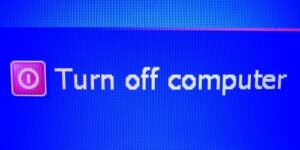
Employee Experience by the Numbers: Top 5 Concerns
In recent years, employee experience has taken center stage as a primary indicator of organizational success. As a result, HR and business leaders increasingly want to

In recent years, employee experience has taken center stage as a primary indicator of organizational success. As a result, HR and business leaders increasingly want to

These days, we’re flooded with headlines about The Great Resignation, The Big Quit, and The Great Reshuffle. It’s not surprising. The desire for career advancement
Take a look around your office. How many employees are glued to their computer screens? Eating lunch at their desks? Is the breakroom empty? With
Are you opening work emails when you’re at home? Getting business updates on your iPhone when you’re out with the kids? Technological advances mean that

Under what conditions do you perform best? If something is standing between you and your work “zone” it’s time for a work/life fit reality check…

When disaster strikes in today’s “always on” world, chances are that you’ll hear the news immediately at work. How can you and colleagues maintain balance and stay productive?

Grand as it may be, today’s “always on” connectivity experiment is taking a toll, and business leaders are just starting to respond. But how can we help ourselves?

Feeling overworked and undervalued at work? Here are 5 ways to take action on your own behalf, when others don’t recognize or reward your efforts…
#TChat Radio Show Recap for 8/31/11 with the @12Most folks!
We had lunch last weekend with friends we had not seen for quite some time. My former co-worker’s spouse looked at me, as I was
(Editor’s Note: All of us in the TalentCulture community mourn the loss of our dear friend, brilliant colleague and mindful mentor, Judy Martin, who passed
It takes time, effort and strategy to develop your body, mind or talents. Why not use the same approach to your profession? Here’s a start: 5 ways to boost career productivity and effectiveness…
(Editor’s Note: All of us in the TalentCulture community mourn the loss of our dear friend, brilliant colleague and mindful mentor, Judy Martin, who passed
No matter where you lie on the generational spectrum, you’ll probably agree that we’ve never faced more distractions–or more pressure to deliver results–than in the current business climate. So, how can companies achieve great results today, by focusing on improving employee engagement and commitment?
Are you a recent grad? Unemployed or Underemployed? Here are ideas for making the most of your summer “break” to prepare for the next step in your career and your life. Make your own day!
Sometimes we find zen. A moment of harmonic convergence in our lives when all things family, friends, co-workers, employers, work and life become one. Sometimes.
Originally posted by Matt Charney, one of #TChat’s moderators, on Monster Thinking Blog It’s interesting that the genesis of work-life balance really started, with, well, Genesis: somewhere,